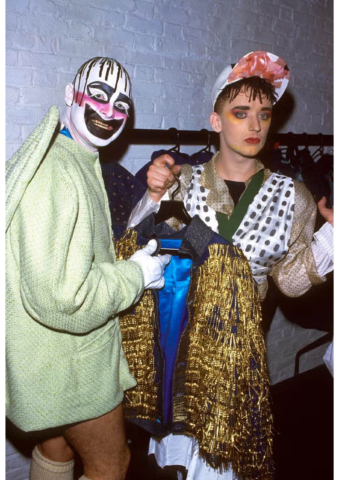WEBBED; Literature and the Conscious Mind
By Anoushka Pinto
As humans, expression and conversation are very natural to us. We are sociable animals, and that means we’re constantly engaging in some kind of speech. In fact, we thrive on it. Although, that doesn’t mean it is restricted to mere conversations between two or more people.
Have you ever imagined a conversation with yourself as a form of literary expression? Have you considered that it could be used as a creative stunt or technique? Everyone experiences it, on a daily basis. Picture this: you’re out shopping and have a simple mental list of things you need to buy… you find yourself examining the aisles and thinking to yourself, “Wait, I definitely need a new bottle of shampoo. Oh shoot, I forgot I have to do the laundry! I think I’ll have some Spaghetti Bolognese for dinner and watch re-runs of The Great British Bake-Off“.
The major voices of 20th century literature were preoccupied by the same notion, effectively incorporating it into their writing. The chaotic feelings and thoughts of the mind were penned down in a way that seemed natural to the character. It sounds rather bizarre though, doesn’t it? Not only did the writer outline the character and create the storyline, but they also ventriloquise the inner thoughts of this character.
This style developed into a narrative technique that literary critics have historically referred to as stream of consciousness, coined by William James in the Principles of Psychology (1890). In other words, it lets you listen in on a character’s internal monologue, as if you’re reading a diary entry with very little or unpredictable use of punctuation.
The technique was prevalent in the 1900s, particularly in the works of writers like Virginia Woolf (Mrs Dalloway), James Joyce (Ulysses) and Marcel Proust (In Search of Lost Time), who became early advocates of the style.
Woolf’s book Mrs Dalloway revolves around events that transpire within a single day. The third-person narrative perspective uses long and short sentences, separated by semi-colons, to show the character’s flow of thoughts, experiences, memories and feelings. It’s a labyrinth of subjective thought… an intricate web of consciousness and communication.
Time plays a crucial role in the stream of consciousness. In Mrs Dalloway, Woolf uses a unique timeline where she jumps to a significant past memory of the character and ties it into the present. She does so several times, and while it may seem perplexing, it blends seamlessly with the narrative and provides depth, detail and context.
T. S. Eliot, another avid fan of the technique, wrote the poem The Love Song of J. Alfred Prufrock in 1910, in which he used repetition in his construction of the stream of consciousness. The eponymous subject of the poem revisits certain thoughts after straying away from them, as if constantly thinking about them in the back of his mind.
As a literary tool, stream of consciousness has evolved and come a long way since the early 20th century. It continues to be important to the works of contemporary writers including Toni Morison (Beloved), Charles Bukowski (Pulp), Irvine Welsh (Trainspotting) and Salman Rushdie (Midnight’s Children).
But even to this day, Virginia Woolf is considered the torch-bearer for the use of stream of consciousness in literature. She has been deemed an iconic literary figure in the modern times, so much that she has a special day dedicated to her and her work in the U.K.
Dalloway Day is celebrated each year in celebration of Woolf’s Mrs Dalloway. The book is set on a Wednesday in mid-June and takes place over a course of a single day. This year, Wednesday, 19 June will be observed as Dalloway Day, and will feature a number of events being organised in London.
Paris-based publishers, SP Books specialise in publishing limited facsimile editions of manuscripts of some of the most famous classics. They are publishing the first and only full-length manuscript of Mrs Dalloway (originally The Hours) which also sports evidence of considerable editing, rewriting and corrections throughout. The draft also features two essays by leading Woolf experts; Helen Wussow, Dean, The New York School, New York and Pulitzer prize-winning novelist and screenwriter, Michael Cunningham.
Other events being held in and around London on Wednesday, 19 June, include:
- British Library: Three well-known authors, Monica Ali, Olivia Laing and Elif Shafak discuss Woolf’s influence on class, mental health and race in the 2000s.
- National Portrait Gallery: Novelist Lauren Elkin will provide a guided tour around the gallery looking at selected paintings and photographs of and by Virginia Woolf and other names associated with Bloomsbury Group.
The Institut Francais will host a special screening of the critically acclaimed film Vita & Virginia on 5 July, which will be accompanied by a Q&A session with Director, Chanya Button. The story revolves around Woolf’s love affair with aristocratic writer and poet Vita Sackville-West. The film will have screenings across London on 5 July.









